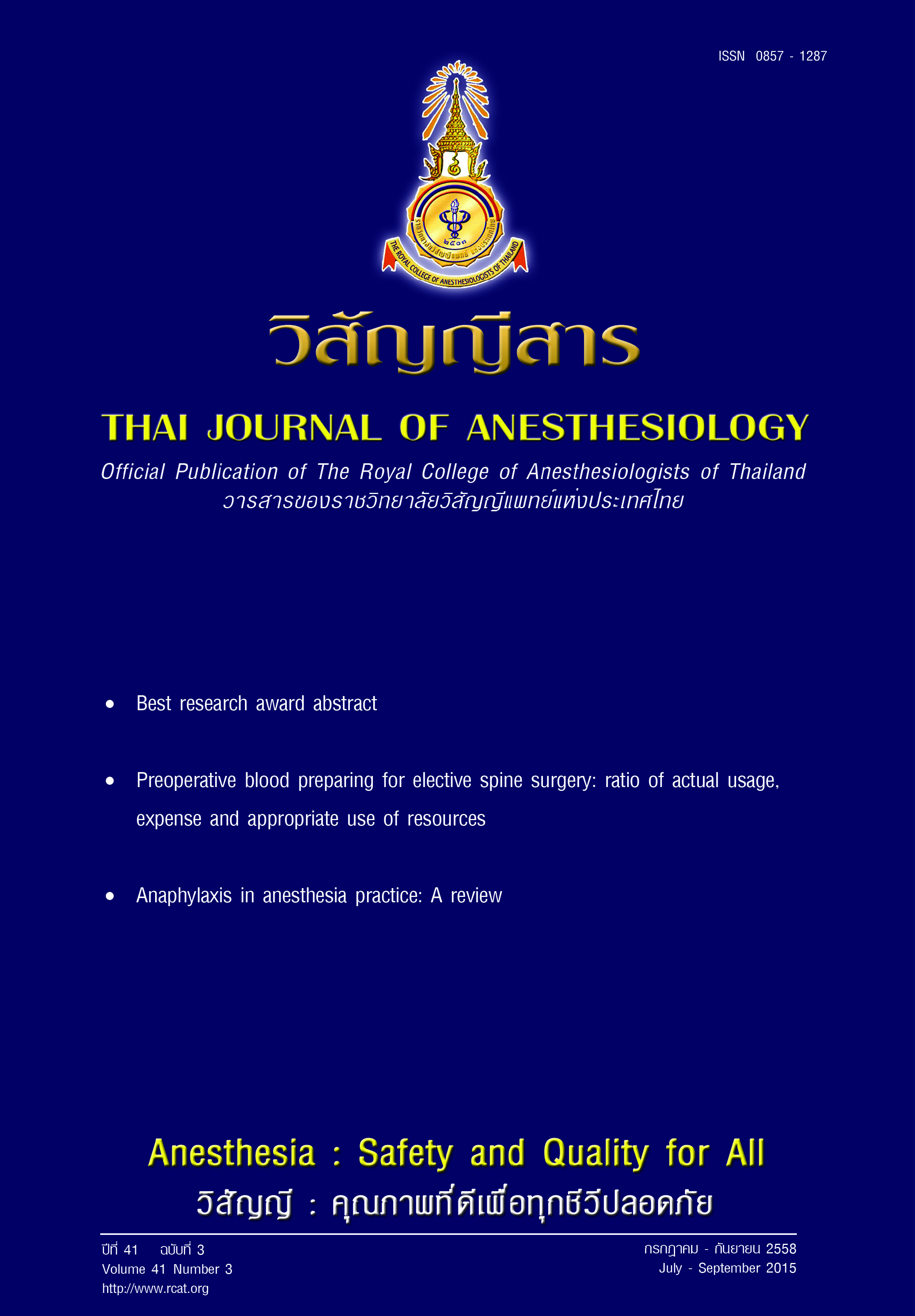Can 0.15 mg. intrathecal morphine be effective in post cesarean pain control in comparison with 0.2 mg.?
Main Article Content
บทคัดย่อ
Background: 0.2 mg. intrathecal morphine for post cesarean pain control provides good analgesia with many side effects. This study aims to compare the effectiveness of 0.15 mg. and 0.2 mg. intrathecal morphine, whether the lower dose can produce the same analgesia with less side effects.
Method: With approval from Ramathibodi ethic committee, A prospective randomized study of ASA physical status I and II term parturients undergoing cesarean section. Patients were randomized into 2 groups: group I (study group) and group II (control group) received 0.15, 0.2 mg intrathecal morphine with 10 mg heavy bupivacaine for spinal anesthesia. Tramadol was used as a rescue drug postoperatively upon request and the amount of tramadol used in the first 24 hr. was compared as the primary endpoint. Other common side effects: nausea, vomiting, pruritus, pain score and satisfaction score were also recorded.
Results: Data from 128 patients was analyzed. There was no difference in the amount of tramadol use, number of patients who require rescue drug, time to first dose of tramadol and percentage of patients with moderate to severe pain score between the two groups. There was a trend of less severity and less episode of nausea and vomiting (p = 0.09) and higher satisfaction score (p = 0.08) in the 0.15 group. Incidences of pruritus were not different between the two groups.
Conclusion: The dose of 0.15 mg. intrathecal morphine provides adequate post cesarean analgesia, with a trend toward less nausea, vomiting and higher satisfaction score.


